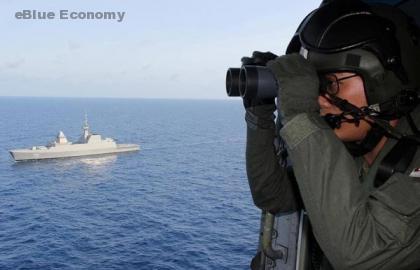The pandemic brought about an observable increase in transnational crimes – smuggling, piracy, and trafficking.
The Southeast Asian maritime domain continues to be fraught. The Covid-19 pandemic brought about an observable increase in transnational crimes such as smuggling – at first, pandemic-related medical material, then later food – as well as illegal drug trading and human trafficking.

Piracy and armed robbery against ships, a perennial maritime security challenge in Southeast Asia, remains a problem. In 2021, the Singapore Strait saw a six-year high in incidents, although most of them were not ship-jacking episodes and did not involve serious loss of property or casualties.
And since the fall of Afghanistan to the Taliban in August 2021, Southeast Asia has been bracing for the possible spill-overs and the growing threat of resurgent transnational terrorism. In the wake of Covid-19, Southeast Asian countries will continue to focus their energies on addressing these maritime security challenges.
At the same time, the Russia-Ukraine conflict is likely to add to the geopolitical uncertainties felt by regional governments – perhaps wary of a scenario revolving around China’s military invasion of Taiwan or limited armed conflict in the South China Sea.
But arguably more important will be trepidations about a potential shift in US focus from the Indo-Pacific to Europe, despite Washington’s assurance.
This means Southeast Asian countries will seek to maintain and enhance their economic and strategic engagements with interested extra-regional powers.
These plans fit nicely into ASEAN’s principle of inclusivity in regional security architecture, even if there is no concerted, coordinated effort in this regard by the member states. But it is important to understand that due to sensitivities over sovereignty and jurisdictional rights,
Southeast Asian countries seek to police their own waters, so extra-regional aid for capacity-building should come in the form of fiscal, materiel, and training assistance, as well as information sharing.
There is certainly no one-size-fits-all approach to maritime security capacity-building assistance in Southeast Asia. It boils down to the specific context of each recipient of the aid, inter alia, their national interests, maritime security priorities, and national defense and security architecture (not to mention the accompanying intricacies of inter-agency/service turf wars and stovepipes).
In a nutshell, capacity-building assistance has to be targeted and tailored for each country. Ideally, it would be helpful for contributors to coordinate and synergize those efforts in order to minimize, if not avoid, duplication.

Regional capacity-building assistance should not focus solely on the uniformed agencies, but more broadly on promoting better maritime governance in Southeast Asia.
This article is part of a series examining regional perspectives on maritime security. This project is led by La Trobe Asia, Kings College London, and Griffith Asia Institute with the support of the UK High Commission in Canberra.













